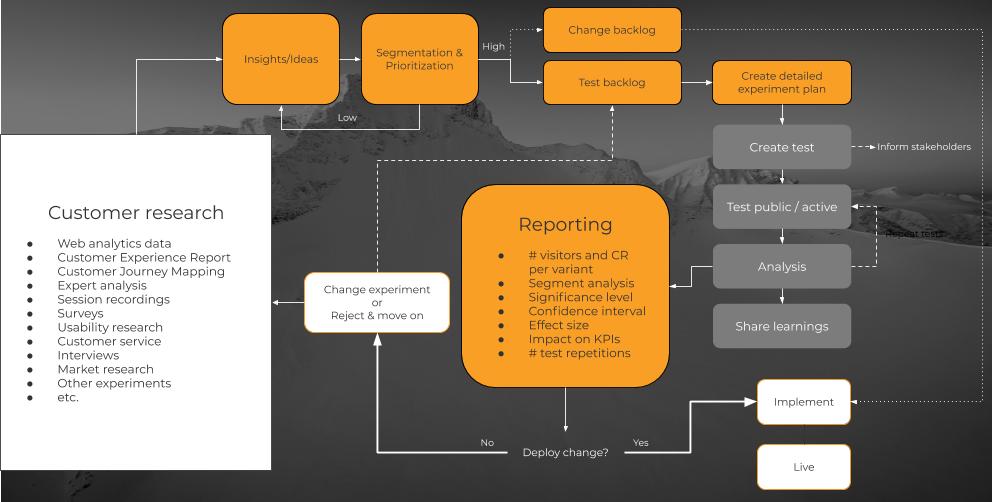Every year, the (Dutch) Shopping Tomorrow initiative brings together a large group of subject matter experts (450 this year) to tackle specific business challenges about—you guessed it—how consumers are shopping in the near future (tackling both online and offline).
Since 2015 I’ve been a part of the ‘Conversion Optimisation’ group where—together with 20 other Dutch experts—I worked on improving the processes around optimising on-site revenue and sharing these in our yearly whitepaper.
Today I’d like to take the opportunity to share some of the main findings that we published in one of these whitepapers. Specifically, I’ll be covering:
- Customer experience optimisation (CXO) maturity
- Customer experience optimisation cycle
- Customer experience optimisation priority
Also see my previous article: The Optimisation Myth: Running Experiments During Peaks
Customer experience optimisation Maturity
This model is created to show where you stand regarding conversion optimisation in your company. We defined 7 dimensions that can be scored on a scale from 1–5:
- People (FTE)
- Available CXO skills
- CXO activities
- Testing quantity
- Available CXO tools
- Optimisation KPIs
- Company-wide support
The table below gives you a global idea of the different levels for each:

This model neatly ties into the overall Digital Maturity Programme, addressing your challenges and opportunities—from an inside-out perspective. If you’re interested in assessing and evaluating your digital maturity and capabilities for growth, check out our Digital Maturity assessment.
Customer eXperience Optimisation Cycle
So OK, nice to know the competencies you need and where you stand right now, but what does the conversion optimisation process itself look like? What will these people be doing?
For all companies on Level 2–5, it will roughly look like the schedule below:

Customer eXperience Optimisation Priority
So when you have your list of ideas, where do you start? How do you prioritise?
For this, we made a combination of the PIE (Potential Importance Ease) model and the ConversionXL (PXL).

[View spreadsheet to use yourself]
If prioritising your testing ideas is an issue for you, I’d highly recommend reading 4 Frameworks To Help Prioritise & Conduct Your Conversion Testing by CXL.
What to test and what to implement directly?
Looking at the CXO version of Maslow’s pyramid, we made the following choices:

For example: if you find an SSL security issue during a usability test, you’re not going to A/B test how that impacts conversion: you just implement it. But when there are issues with usability or functionality, it depends on the issue if you want to test it or implement it directly. Questions around your UVPs and USP should always be validated through an A/B test.
Final takeaways from the expert group
- Always create your list of potential improvements based on (qualitative or quantitative) data instead of gut feeling;
- Also, use data to prioritise your list in order to get maximum impact on your KPIs with your available resources;
- Validate potential improvements through A/B testing and setup processes to continuously learn from your target audience. CXO/CRO is not a one-off project, it’s a continuous effort!
See the complete presentation and cases on slideshare (in Dutch).
I hope this is useful to you—if you have any specific questions about the Dutch resources I linked to, let me know!
Are you or your business looking for a refreshed Online, Omnichannel or eCommerce strategy? Vaimo’s Strategy and Consulting Team acts as a trailblazer for your business, guiding you through new territories so that you reach and exceed your business goals. Combining the best in business insight and digital enablement we make sure that you are equipped to plan for and tackle your digital challenges head-on. Book a 15 minute intro call here.








